 Much as we hate steenkin’ virus writers, we have to reluctantly take our hats off to the author of this Yahoo! Messenger Worm for at least being a bit original.
Much as we hate steenkin’ virus writers, we have to reluctantly take our hats off to the author of this Yahoo! Messenger Worm for at least being a bit original.
Described as “one of oddest and more insidious pieces of malware we have encountered in years,” by Tyler Wells, senior director of research at FaceTime Security Labs, the ‘yhoo32.explr’ Instant Messaging worm takes the novel step of installing its own Web browser onto a victim’s PC.
Somehow managing to keep a straight face, the dodgy-as-feck application announces itself as “The Safety Browser”, and sneakily uses the IE icon to make it easy for users to mistake it for the legitimate Internet Explorer browser.
 Once installed, the browser opens up a user’s PC to a world of nasties, switching on pop-ups by default, hijacking their Internet Explorer homepage to point to a well-iffy site stuffed full of spyware-loaded links and, curiously, introducing an awful looped music track that plays every time the computer is turned on.
Once installed, the browser opens up a user’s PC to a world of nasties, switching on pop-ups by default, hijacking their Internet Explorer homepage to point to a well-iffy site stuffed full of spyware-loaded links and, curiously, introducing an awful looped music track that plays every time the computer is turned on.
Once installed on the victim’s machine, the self-propagating worm hotfoots it to the user’s Yahoo! Messenger contacts and sends out links to a Website that then loads a command file onto the user’s PC and installs the (ahem) ‘Safety Browser’.
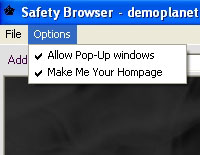 “This is the first instance of a complete Web browser hijack without the user’s awareness,” said Tyler Wells.
“This is the first instance of a complete Web browser hijack without the user’s awareness,” said Tyler Wells.
“Similar ‘rogue’ browsers, such as ‘Yapbrowser,’ have demonstrated the potential for serious damage by directing end-users to potentially illegal or illicit material,” he added, before concluding that such ‘rogue’ browsers are becoming the “hot new thing among hackers.”
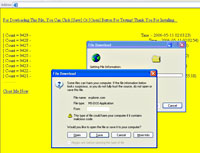 The worm was found by the India research arm of FaceTime Security Labs via a ‘honeypot’ a trap set to detect viruses, worms, spyware and other threats, and reflects the growing threat from Instant Messenger applications and protocols being used to distribute malicious files and executables, as well as IM spamming (which now has now earned the daft acronym ‘SPIM’).
The worm was found by the India research arm of FaceTime Security Labs via a ‘honeypot’ a trap set to detect viruses, worms, spyware and other threats, and reflects the growing threat from Instant Messenger applications and protocols being used to distribute malicious files and executables, as well as IM spamming (which now has now earned the daft acronym ‘SPIM’).
If you want to find out more about the details of this latest worm – and the people behind it – check out the amusing blog of Chris Boyd, a FaceTime Security Labs researcher.
 There were a lot of infrastructure companies trying to sell WiFi or WiMAX systems, some in the consumer space, but mainly for service providers. Of the mobile networks, only T-Mobile had a big stand, Orange had a small “business” services stand and O2 had a section of the Cloud’s stand.
There were a lot of infrastructure companies trying to sell WiFi or WiMAX systems, some in the consumer space, but mainly for service providers. Of the mobile networks, only T-Mobile had a big stand, Orange had a small “business” services stand and O2 had a section of the Cloud’s stand.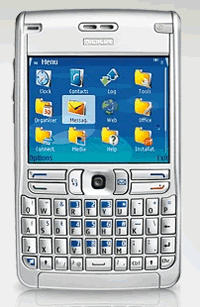 USR aka (US Robotics) have announced a USB handset that works with Skype. It’s really just a USB sound-device, but looks like a phone and has Skype integration (i.e. you can pull your contacts etc from Skype and they show in the phone’s display). They’ve also got a USB Skype conferencing device so several people sitting around a table can listen and speak on the call. Their ADSL/ADSL2+/Wireless routers are all now very simple to configure with wireless security turned on by default and basic ISP settings pre-configured.
USR aka (US Robotics) have announced a USB handset that works with Skype. It’s really just a USB sound-device, but looks like a phone and has Skype integration (i.e. you can pull your contacts etc from Skype and they show in the phone’s display). They’ve also got a USB Skype conferencing device so several people sitting around a table can listen and speak on the call. Their ADSL/ADSL2+/Wireless routers are all now very simple to configure with wireless security turned on by default and basic ISP settings pre-configured. The Cloud were there with a HUGE O2 Exec (aka i-mate JASJAR), anyone using the Exec can log-in to the Cloud’s homepage through WiFi, hit the O2 logo, enter their mobile number and the user will be phoned back. If they enter the digit 1 they’ll be granted access (and billed to that number).
The Cloud were there with a HUGE O2 Exec (aka i-mate JASJAR), anyone using the Exec can log-in to the Cloud’s homepage through WiFi, hit the O2 logo, enter their mobile number and the user will be phoned back. If they enter the digit 1 they’ll be granted access (and billed to that number). Zyxel had a their normal range of wired/wireless and security products. The star of their stand was their keyfob wireless hotspot locator. It works with all modes of WiFi (i.e. 802.11a/b/g) and supports unsecured and secure networks (WEP, WPA etc) showing what networks are available (at least 9 were available around the Zyxel stand).
Zyxel had a their normal range of wired/wireless and security products. The star of their stand was their keyfob wireless hotspot locator. It works with all modes of WiFi (i.e. 802.11a/b/g) and supports unsecured and secure networks (WEP, WPA etc) showing what networks are available (at least 9 were available around the Zyxel stand). Back on Tuesday Google released their latest offering, the Google Web Toolkit (GWT). For those who didn’t catch the news at the time, it’s a downloadable application that lets developers write Java code that is translated into Javascript.
Back on Tuesday Google released their latest offering, the Google Web Toolkit (GWT). For those who didn’t catch the news at the time, it’s a downloadable application that lets developers write Java code that is translated into Javascript. The interface – Now they’re ready to box
The interface – Now they’re ready to box Summary I’ll leave you with the key point – Google Web Toolkit gives people the tools (literally) to write applications that work in any Web browser, circumvent Microsoft’s crown jewels, the Windows interface.
Summary I’ll leave you with the key point – Google Web Toolkit gives people the tools (literally) to write applications that work in any Web browser, circumvent Microsoft’s crown jewels, the Windows interface. For globe trotters, city slickers, urban commuters and spoddy transport types, the freeware Metro looks to be a very useful application.
For globe trotters, city slickers, urban commuters and spoddy transport types, the freeware Metro looks to be a very useful application.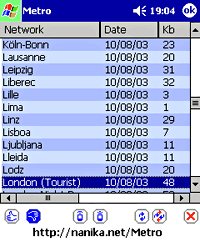 Using Metro
Using Metro Using the program’s simple interface, you can also get Metro to display station details, stops between the stations on your journey and even associate contacts with stations.
Using the program’s simple interface, you can also get Metro to display station details, stops between the stations on your journey and even associate contacts with stations. Conclusion
Conclusion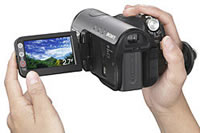 The HC3 has a tough act to follow – its own big brother, the HC1. Last year’s HC1 brought High Definition recording within the budget of almost any home movie-maker for the first time, and did it with assurance and style. Luckily, Sony hasn’t rested on its laurels, and the HC3 feels very much like a replacement for the HC1 rather than a mere upgrade.
The HC3 has a tough act to follow – its own big brother, the HC1. Last year’s HC1 brought High Definition recording within the budget of almost any home movie-maker for the first time, and did it with assurance and style. Luckily, Sony hasn’t rested on its laurels, and the HC3 feels very much like a replacement for the HC1 rather than a mere upgrade.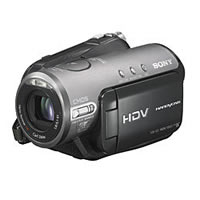 Changes to the imaging pipeline have enabled Sony to offer a couple of new features in the HC3. The first is the ability to capture up to three 2MP still photos while filming (the images buffer until you stop recording). The second is Smooth Slow capture, where the capture rate increases from 50 to 200 fields per second for three seconds. Audio recording and the Super SteadyShot audio are disabled while you shoot. You can then play back this footage at a normal frame rate, giving 12 seconds of smooth slow motion footage.
Changes to the imaging pipeline have enabled Sony to offer a couple of new features in the HC3. The first is the ability to capture up to three 2MP still photos while filming (the images buffer until you stop recording). The second is Smooth Slow capture, where the capture rate increases from 50 to 200 fields per second for three seconds. Audio recording and the Super SteadyShot audio are disabled while you shoot. You can then play back this footage at a normal frame rate, giving 12 seconds of smooth slow motion footage. IT workers who spend all day battling with clueless idiots who have just deleted critical OS files because they looked ‘messy’ already know it, but now it’s official: people who work in IT are the most stressed folks on the planet.
IT workers who spend all day battling with clueless idiots who have just deleted critical OS files because they looked ‘messy’ already know it, but now it’s official: people who work in IT are the most stressed folks on the planet. IT
IT Just when you thought Sony couldn’t add any more formats to its camcorder range (the electronics giant already carries MiniDV, MicroMV, Hi8, Digital 8 and DVD models), along comes a new hard disc camcorder (the DCR-SR90) and a re-vamped Hi Def pro-sumer shooter (HDR-HC3). We caught up with both at an exclusive hands- on presentation in London. Details of the Sony HDR-HC3 will follow tomorrow.
Just when you thought Sony couldn’t add any more formats to its camcorder range (the electronics giant already carries MiniDV, MicroMV, Hi8, Digital 8 and DVD models), along comes a new hard disc camcorder (the DCR-SR90) and a re-vamped Hi Def pro-sumer shooter (HDR-HC3). We caught up with both at an exclusive hands- on presentation in London. Details of the Sony HDR-HC3 will follow tomorrow. The interface is generally very good, with a 2.7-inch folding touchscreen ported straight from Sony’s MiniDV range, giving access to a good range of creative features, including true 16:9 recording.
The interface is generally very good, with a 2.7-inch folding touchscreen ported straight from Sony’s MiniDV range, giving access to a good range of creative features, including true 16:9 recording.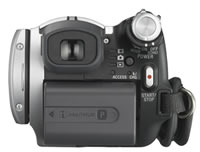 Playback features include basic editing tools that let you move scenes around but not cut or join them. Ease of use is emphasized with a One Touch DVD burn button for Windows computers with a DVD writer – just plug in via USB, slip in a disc and away you go.
Playback features include basic editing tools that let you move scenes around but not cut or join them. Ease of use is emphasized with a One Touch DVD burn button for Windows computers with a DVD writer – just plug in via USB, slip in a disc and away you go.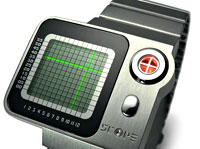 Without doubt quite the silliest timepiece we’ve seen for a long time, this new watch by Japanese manufacturers Scompe manages to turn the mundane task of checking the time into some sort of sci-fi adventure.
Without doubt quite the silliest timepiece we’ve seen for a long time, this new watch by Japanese manufacturers Scompe manages to turn the mundane task of checking the time into some sort of sci-fi adventure. Managing to complicate the simple task of reading the time, users must read off the vertical line for the hour and the horizontal line for the minutes, checking their values against the tiny onscreen numbers.
Managing to complicate the simple task of reading the time, users must read off the vertical line for the hour and the horizontal line for the minutes, checking their values against the tiny onscreen numbers.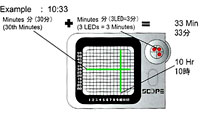 Powered by 2 lithium cells, the SCOPE watch is quite a chunky beast, measuring 45mm x 33mm x 11mm.
Powered by 2 lithium cells, the SCOPE watch is quite a chunky beast, measuring 45mm x 33mm x 11mm.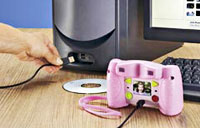 Back in our day, we were lucky if we got a lump of mud as a toy (Luxury! – editor), but kids today are spoilt rotten with an endless succession of frivolous gadgets demanding an unwelcome draining of parents’ wallets.
Back in our day, we were lucky if we got a lump of mud as a toy (Luxury! – editor), but kids today are spoilt rotten with an endless succession of frivolous gadgets demanding an unwelcome draining of parents’ wallets. Fisher Price’s website doesn’t offer any details about camera resolution, but we figure it’s going to be pretty crappy.
Fisher Price’s website doesn’t offer any details about camera resolution, but we figure it’s going to be pretty crappy. The circular player features big buttons and an LCD screen with icons to let kids pick their own choons and be a junior DJ Selectaaaaaa!
The circular player features big buttons and an LCD screen with icons to let kids pick their own choons and be a junior DJ Selectaaaaaa!